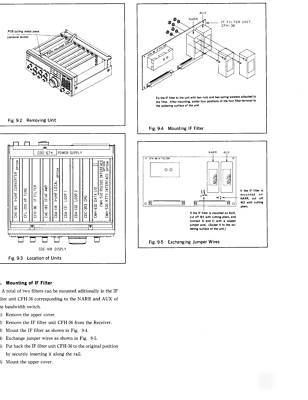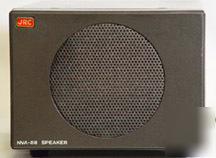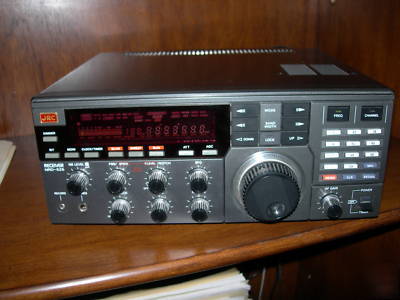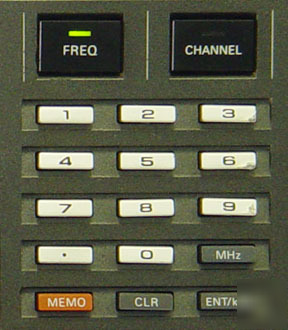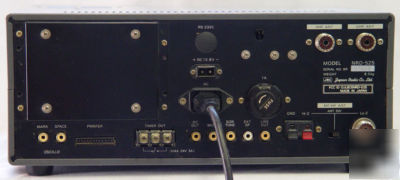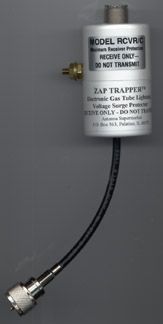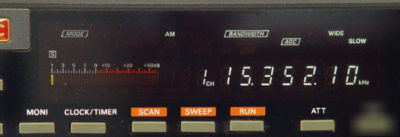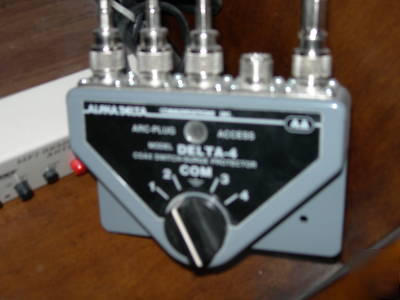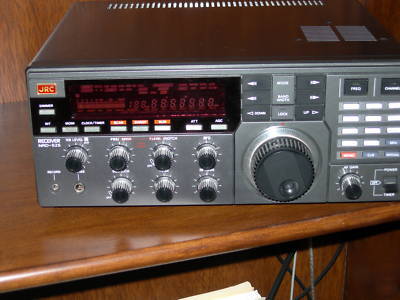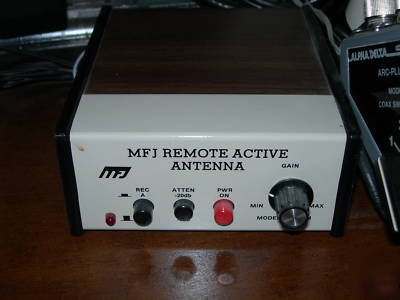____________________ > Abingdon
> System components
> Old Style
> Hydrolic Components
> High pressure Components
> Jrc nrd-525 communication receiver with external speake
Jrc nrd-525 communication receiver with external speake
Absolutly less than 10-15 hours of usage, Mint Condition, no wear marks any where. Original box and packing as well as owner's manual. Will include MFJ-1024 control box without the wire or the antenna retail around $150 with the wire and antenna, as well as Delta 4 Antenna switches retails around $90, and Antenna zap trapper retails at $25.
, 1st IF 70,455 MHz, 2nd IF 455 kHz
, resolution 10 Hz, coverage 90kHz - 34 MHz,
Sensitivity 90 kHz - 1,6 MHz AM<15uV, SSB<5uV, 1,6 - 30 MHz AM<2uV, SSB <0,5 uV
-6/-60 dB AM wide 4/10 kHz, inter 2/6 kHz, narrow* 1/3 kHz, aux/FM 12 kHz
S-Meter, RF-Gain, two AGC speeds, Pass Band Tuning, Noise blanker
200 memories, Scan functions, Clock / Timer
With it's dimensions of 330 x 130 x 280 mm and it's weight of 8,5 kg, the NRD-525 is nearly identically sized as the earlier NRD-515
. But in the same cabinet size, the NRD-525 has a small monitor speaker and a big number of memories already integrated.
In the seven years after the apperance of the NRD-515, JRC did improve the receivers outfit by adding multicoloured pushbuttons and a colourful flourescent frequency display lacking a bit of the elegance of the older classic set.
When You take the lid off the set, You see the modular construction, for repair or modufication, You can swap complete boards of the receiver. You can also just plug in an optional board with a RTTY demodulator, a RS-232 computer interface or a VHF/UHF frequency converter. The adaptor board CMH-365 allows to extend the boards connectors, so that is can be accessed for measurements while still connected to the receiever. There is also a matching optional speaker, the NVA-88.
As with some other semiprofessional or professional grade sets, You have to make sure that all controls are in standard settings for Your first steps with this receiver - if some controls are badly detuned, You might winde whether there is something wrong with the set, if nothing comes out of the speaker... there are no flashing warning indicators to prevent You from completely detuning the set.
JRS's operation schema is intended to give You full control to most parameters directly from the front panel, so You will ahve to find Your way through the 43 control elements on the front panel.
In the right lower corner of the front panel, You find the mains switch with an additional position for timer controlled operation of the receiver, next to this, You find the volume control. Just above, You find two big pushbuttons to set the receiver to direct tuning (FREQ) or memory (CHANNEL) operation. According to it's setting, You can use the ten numbered keys (no marker for the number 5 key for blind or visually disabled listeners) to directly enter a reception frequency in MHz or kHz or a frequency channel number. Also according to the setting FREQ or CHANNEL, You can use the UP/DOWN keys for fast tuning or for scrolling through the memory channels.
The other pushbuttons let You select the reception modes and IF bandwidth filters, You cannot directly access a mode or bandwith as with the 6 buttons on Drake's R-8A, but You can switch them back and forth, better then the arrangement on Drake's R-8. The LOCK pushbutton inactivates the main tuning knob.
In the left lower corner, You find seven rotary controls. In the bottom row, the knob just at the left of the main tuning knob controls the RF gain, the next ons is the TONE and the leftmost the SQUELCH control, which will mute the receiver as long as there is no strong signal. In the top row, you find (from the right hand) the BFO, the Notch Filter control and the PBT (Passband Tuning) control. Leftmost is the Noise blanker, adjust the Noise blanker intensity by rotating it and set it to WIDE by pulling it out.
The big colourful fluorescent display indicates the reception frequency, the memory channel number and several receiver settings. The S meter is a fluorescent display bar, too - and it's extremely rapidly moving. The clock display can only be activated by pressing the CLOCK pushbutton, it will disappear, as soon as a next frequency is entered.
Some small pushbuttons below the display panel activate the RIT, the attenuator, the fast and slow speed AGC and the frequency scan (SWEEP) and memory scan (SCAN) options. In the SWEEP mode, the receiver will automatically scan a range between two edge frequencies, You can control scan speed and stop signal level with the two controls with the orange markings, RUN will start the scan mode.
The oldest NRD-525 models had only a tuning speed of 2 kHz per revolution and 10 Hz steps, perfect for radioteletype reception, not so well suited for searching a whole broadcast band. In later sets (after the End of 1986), You can speed up tuning ten times and increase frequency steps to 100 Hz by pressing thr RUN button.
At the rear of the receiver, You find all necessary connectors: The NRD-525 accepts not only 230V mains but also 13,8V DC for mobile operation from a car battery. There are low power timer outputs, You can use them to drive a high voltage relay and to time a cassette recorder for automated recording. The antenna connectors are switchable for high and low impedance antennas.
The RF signal will pass the switchable attenuator and an electronic preselector stage, after having passed a 35 MHz low pass filter, it will me mixed up to the 70,455 MHz first intermediate frequency. After a second amplifier stage, the signal is mixed to the second 455 kHz intermediate frequency. It will pass the Noise Blanker, the IF filters and the HF notch filter and will be handed over to the Am and SSb product demodulator.
Frequencies are controlled by a PLL synthesizer, it is controlled by an optical encoder from the main tuning knob or several memory and scanning functions; all memory channels save reception mode, bandwidth filter setting, attenuator and AGC settings.
In practical use, the NRD-525 receiver offers You an excellent sensitivity and extensive signal processing capabilities. Even with medium length random long wire antennas, it will offer You great DX experience. Thanks to the electronic proselection, I never encountered any problems with intermodulation or cross modulation effects.
The factory standard IF bandwidth filters are not considered as optimal for superior DXers needs. The wide 4/10 kHz (-6/-60 dB) filter will not efficiently cut off 5 kHz adjacent channel interference, the INTERmediate filter gives a very bassy audio, I would wish to find a filter in between or a 4 kHz filter with far better skirt selectivity.
